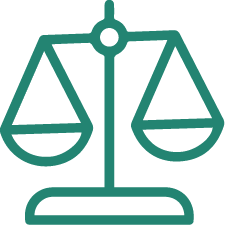The expert panel provided the following advice to the questions raised:
- On which basis could it be concluded that a respiratory infectious agent should be considered as causing a life-threatening disease? According to that basis, should SARS-CoV-2 be considered as causing a life-threatening disease?
Conclusion of the advice: SARS-CoV-2 can still cause serious illness, but it no longer poses a life-threatening risk with significant mortality for the general population. Severe cases primarily affect high-risk groups, such as those with underlying conditions, the elderly, and immunocompromised individuals. Given that most people have immunity preventing severe outcomes, the infection is not currently classified as “causing a life-threatening disease”. - On which basis could it be concluded that a respiratory infectious agent should be considered of high or suspected high risk of propagation? According to that basis, should SARS-CoV-2 be considered of high or suspected high risk of propagation?
Conclusion of the advice: SARS-CoV-2 should be considered of high or suspected high risk of propagation due to its rapid transmission, high reproductive rate (R0), and ability to spread among both symptomatic and asymptomatic individuals. While vaccination has reduced transmission, new variants and unvaccinated populations still present significant risks. Its persistence in the population, alongside behaviours and virus mutations, supports its ongoing high risk for widespread transmission. - Is there a significant risk that an erroneous result of a device intended to detect SARS-CoV-2 would cause death or a severe disability to the individual, foetus or embryo being tested, or to the individual’s offspring?
Conclusion of the advice: The risk of an erroneous SARS-CoV-2 test result causing severe harm is generally low. This risk varies based on context:
General Population: For the broader population, false positive or negative results are unlikely to result in death or severe harm.
Vulnerable Populations: For certain groups, such as pregnant individuals, the elderly, or those with underlying conditions, erroneous results could have more significant consequences.
- Is there a risk that an erroneous result of a device intended to detect neutralizing antibodies against SARS-CoV-2 would lead to a patient management decision resulting in a life-threatening situation for the patient or for the patient’s offspring?
Conclusion of the advice: Detecting neutralizing antibodies against SARS-CoV-2 does not significantly influence patient management, even in life-threatening situations. The risk of an erroneous test result leading to a life-threatening scenario for the patient or their offspring is considered low.
It appears that SARS-CoV-2 tests for the general public should no longer be classified as Class D (under Rule 1, second indent), nor as Class C, since the applicable rules (Rule 3c and e) do not apply. They are expected to be classified as Class B under Rule 6. Self-testing devices for SARS-CoV-2 would be classified as Class C according to Rule 4(a).
What does it mean to you?
Manufacturers of SARS-CoV-2 devices should assess how this advice affects their devices and consult their notified body regarding potential changes in risk class. Devices can continue to be marketed under their current risk class if they meet the necessary requirements. The MDCG's guidance on IVD classification is being updated accordingly, but it remains non-binding, with each manufacturer responsible for determining their device’s classification based on its purpose and target population.







.png?width=109&height=108&name=Pharma%20(2).png)
.png?width=111&height=108&name=Medical%20Devices%20(2).png)
.png?width=84&height=107&name=IVD%20(2).png)



.png)

